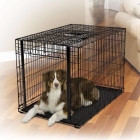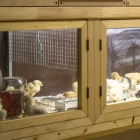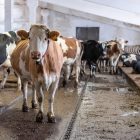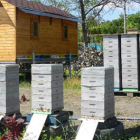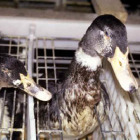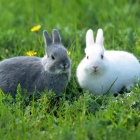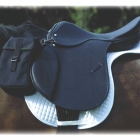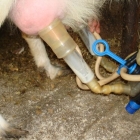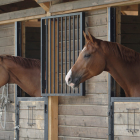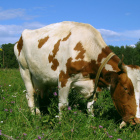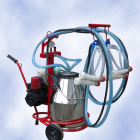Winter Many cows, sheep and goats begin or exacerbate diseases of the limbs. As a rule, the reason for this not on time or ineptly processed hooves.
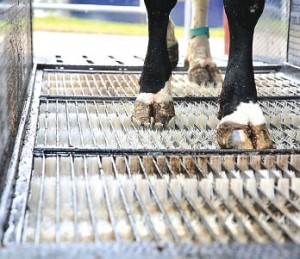 In the summer, when the animals move a lot, their hooves are erased in a natural way, the winter horn grow up, sometimes very much, cracks, rushed, injures soft fabrics. The state of the hoofing horns deteriorates if the cattle is held on the cheese, dirty, cold floor.
In the summer, when the animals move a lot, their hooves are erased in a natural way, the winter horn grow up, sometimes very much, cracks, rushed, injures soft fabrics. The state of the hoofing horns deteriorates if the cattle is held on the cheese, dirty, cold floor.
It is necessary to clear and cut the hooves twice a year: in autumn and spring. But if in the winter time you will notice that the animal laughs or he has unevenly abandoned hooves, you should not wait until spring. After all, it is in the cold time of the year that even a slight ailment will quickly develop into a serious illness.
If the hoof is very solid, and its edges are abnormal (uneven, highly abandoned, with cracks), advise before it cleaning during the day specially hold the animal on raw clay with wood sawdusts to at least soften the hoofs. It is necessary to clean the hoof not only from the edges, but necessarily from the inner surface, and below.

costs. It is always necessary to first kick and fix the animal, after which it is already careful to examine and treat hoofs. Consider, do all this alone is not easy, so call someone to help.
So, mentally (or chalk) spend a line along the perimeter of the hoof parallel to the floor. The fact is that the rear and front parts of the hoof after cleaning must be on the same line. Hope tongs bite the front tips of the hooves before the appearance of a soft black layer (it is impossible to peak the live fabrics). After trimming between the empty, there should be an angle of almost 90 °, then the hoofs will not be injured, touching each other.
If it is necessary and possibly a hoofer tongs or an empty knife, it is necessary to clean the inner surface of the hoof (between the empty) and enthusiasm the abnormal hoofs from the sides.
Cleans the lower knife with an empty knife (in contact with the ground) the surface of the hoof before the dark soft layer appears. Sut off the whole dead layer, as in this area, cows have layers of dead fabric, in which pathogenic microbes develop.
To clean the hoofs of sheep and goats, they are also preferably fixed in the lying position. Moreover, it is more convenient on the table, setting the animal on the side, and fixation to entrust the assistant.
Garden secateur carefully cut off a strongly thrown part of the ungulates until the soft layers of the inner part of the hoof appears. You can slightly cut (if necessary) and the plantar part, but very carefully, so as not to damage live fabrics.
Home care in winter
Comments leave a comment
 Start a discussion ...
Start a discussion ...


